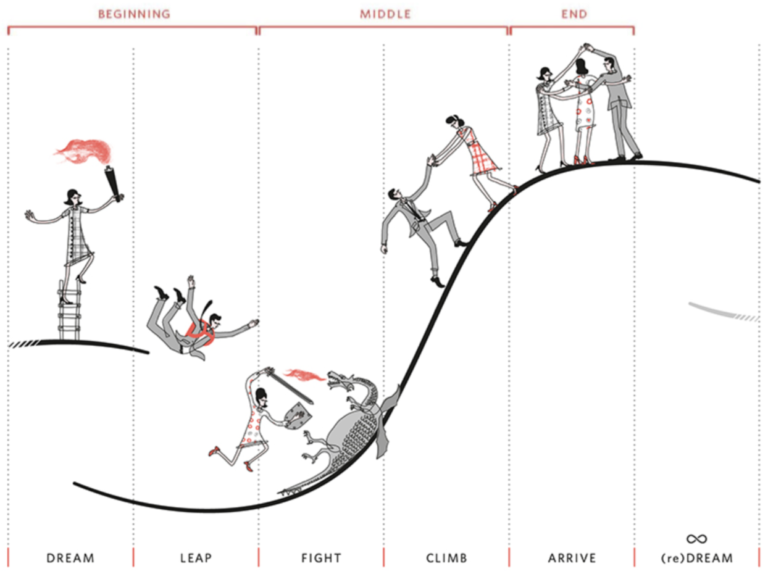In the end, it all comes down to words. Whether they are spoken or not. Following Samuel Beckett’s opening quote, the long-term success of deep-driven change is a tricky road to navigate and empathetic communication can become one of the most important success factors here.
But first – let us take a look at the bigger picture!
Change is inevitable.
In an era of radical change, the future of organizations is neither predictable nor plannable. Instead, the aim is to anticipate and identify trends that will have a long-term impact on organizations. To cut to the chase: Ditch the planning, embrace the uncertainty.
Nevertheless large organizations still fall victim to the belief that it is enough to do business like in the past decades – without taking into account the fact that avoiding change is no longer an option.
Take a look at the Fortune 500 companies from the year 2000: more than half of them have since disappeared. Gone with the wind. No wonder organizations are desperately looking for something most of them once had in common: a deep sense of entrepreneurship combined with the vision of creating a better reality. Sure thing, this is nothing new, but organizations are still struggling with the systemic transformation needed for this. Why? Because it hurts like hell. What could help here? Communication – what else. Kudos to George Clooney.
Go for gold. Go for empathy.
Change does not just happen by creating a fancy slogan and hoping for the best. Change happens by concrete action and thus through people. No more and no less. People won’t act by looking at a few words. But people act through empathetic leadership and by being emotionally committed to a vision worth pursuing.
How? Leaders not only need to understand how potential change might look like, but also need to rally and activate their people. Again – how? By actively communicating a bright and desired state of the future. Fun fact: Today’s omnipresent uncertainty is not a blocker here, but an ultimate opportunity. Take it and help your people leave their comfort zone by using formats, methods and tools to support this.
For instance, informal town hall meetings, the co-creation of a common storybook or the implementation of regular emotional “ceremonies” like the celebration of the weekly success story. A third and last time – how? Take your time to listen and ask the appropriate questions: What are the deepest fears your people have when it comes to change? What do they expect from you as a leader? What motivates them? Where do they see future opportunities?
It’s the journey, not the result, which is most important
Let me show you a picture to describe what I mean with the term journey:

Navigate the Journey – Illuminate
This sketch from the book “Illuminate” describes best what I mean, referring to both commitment and resistance in the course of true change. Sure some of you know what this is all about. Starting with the development of a common vision from scratch and simultaneously preparing for the fight against the corporate immune system (Act One).
Next, getting rid off all the obstacles along the way and climbing towards the ultimate goal (Act Two). The last and third act is the arrival at the pursued destination and the reflection on what has been achieved before embarking on the next adventure. One of the keys to success here? Consistent and empathetic communication.
Only when leaders convince their people to follow their dream, dare the leap of faith and fight for a common vision, will the inevitable change of today become the habit of the future. Clear communication – among other factors like transparency and empowerment of course – can illuminate the path people can and will hopefully follow in order to create moments that activate the organisation as a whole.
Would you like to know more about how you can activate your organization through empathetic and strategic communication? Then get in touch with us!
Article by channel:
Everything you need to know about Digital Transformation
The best articles, news and events direct to your inbox
Read more articles tagged: Change & Transformation, Featured







